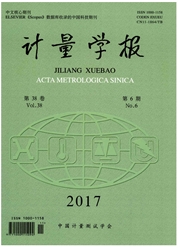

 中文摘要:
中文摘要:
基于声学一阶微扰理论,建立了低压下由于气.固界面的温度阶跃和速度滑移带来的边界层不连续性对圆柱声学共鸣频率的扰动规律,进一步发展了圆柱声学共振频率的非连续边界层修正模型,计算了非连续边界层对4种惰性气体、不同声学模式和不同压力及温度的影响。分析研究显示,气体处于低压状态时,温度阶跃和速度滑移会使声学共振频率发生偏移,不引入声能损耗。在50kPa时,非连续边界层对声学共鸣频率的影响可达10×10-6,表明非连续边界层修正项对于10-6不确定度水平的尖端声学共鸣测量,是一个重要的不确定性来源。
 英文摘要:
英文摘要:
Based on the first order acoustic perturbation theory, the discontinuous boundary layer effects from the temperature-jump and slip-velocity between the gas and the solid wall are investigated. At low pressures ,temperature-jump and slip-velocity make a significant contribution to the resonance frequencies but not to energy losses. The corrections to the resonance frequencies are presented. The corrections for different gases, different acoustic modes at different pressures and temperatures are also compared. This correction is very necessary for the re-determination of the Boltzmann constant.
 同期刊论文项目
同期刊论文项目
 同项目期刊论文
同项目期刊论文
 Using a two-capillary viscometer with preheating to measure the viscosity of dilute argon from 298.1
Using a two-capillary viscometer with preheating to measure the viscosity of dilute argon from 298.1 期刊信息
期刊信息
